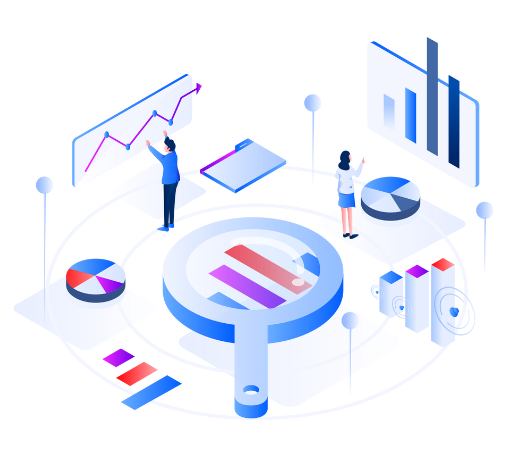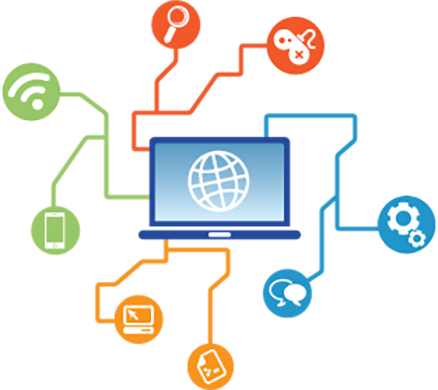
What We Do In Data Visualization
No matter what business type or industry vertical you have chosen, we deliver data in the most efficient way possible. Being an important step in the business intelligence process, we take raw data and business models so as to help make specific business decisions.
Our data scientists team creates ML-machine learning algorithms to collect relevant data into visuals that are easy to understand. Thus, with this process, we help businesses make informed decisions by efficiently delivering data. Companies can use data visualization services to better predict sales volumes and future growth.
Hand-Picked Data Visualization Services
Growth of OneClick IT Consultancy
- 12+Years of Experience
- 1000+Project Deployment
- 200+Expert Developers
- 50+Active Clients
- 30+Frameworks
Excited To Harness The Power Of Data Analytics?
How We Help Businesses Grow With Data Visualization Services

- Business intelligence (BI) is incomplete without visualization. And so our Power BI developers and data scientists work with business stakeholders to create visualizations that meet the needs of business owners.
- We have developed comprehensive technical expertise in the BI space, including Power BI, Tableau, and others. We help businesses by building innovative solutions that deliver self-service visualization capabilities to enable them to uncover powerful insights and patterns for data-backed business decisions.
How Does Data Visualization Work?
Collecting data
Gathering relevant data from various sources is the first step.
Analysing
Providing structure for the data helps viewers better understand statistics.
Filtering
Data filtration will remove the redundant data from unstructured data, and help with improved chart visualization.
Drilling
Drill-down charts from stats. This will help users have better insights that can not be available from raw stats or data.
Representing
Representation is one of the most significant steps. It helps decide which chart resonates with the right information. Users can find an appropriate solution by exploring different options with different technologies.
Improving
Improving essential representations help in user engagement: by refining or adding more features based on user feedback on what works best during each stage of the chart-building process, users are kept engaged throughout their time using statistical tools.
Industries We Serve
Excited To Harness The Power Of Data Visualization?

Why Choose OneClick For Data Visualization
We at OneClick do not only bring ideas but also build effective new-age data solutions and unlock valuable insights from data.
- Proven methodology for visualization
- Offer custom solutions to enable businesses with better outcomes
- A client-first collaborative approach for building interactive dashboards and rich graphics to make decisions faster & better.
- We have a highly proficient team of Data scientists who help leverage hidden patterns while forming result-oriented decisions.
We Are Experts In Data Visualization












FAQs for Data Visualization Services
It is a process of showing data in the form of graphs, images, or maps. Data Visualization can be used to help interpret data across various organizations and industries such as healthcare, finance, education, retail, and more.
Both are related but not the same concept. Information visualization emphasizes data that is important for your business, while data visualization shows raw data graphically.
A good visualization includes two factors:
- -It shows missing dots within the data that are too complex to understand in words.
- -It helps users understand the data easily with graphs, charts, etc.
Data visualization is essential to identify data trends easily. The pictorial depiction of a data set provides an overview of how different pieces of information are related to one another and allows analysts to visualize concepts and new patterns. The graphical presentation of data sets helps create visual concepts and new patterns.
Data visualization tools transform data into charts, graphs, and other visual representations that help analysts analyze massive amounts of information.
Data Visualization experts translate the data sets to the statistic data in a graphical presentation. They specialize in statistics and visualization tools.















